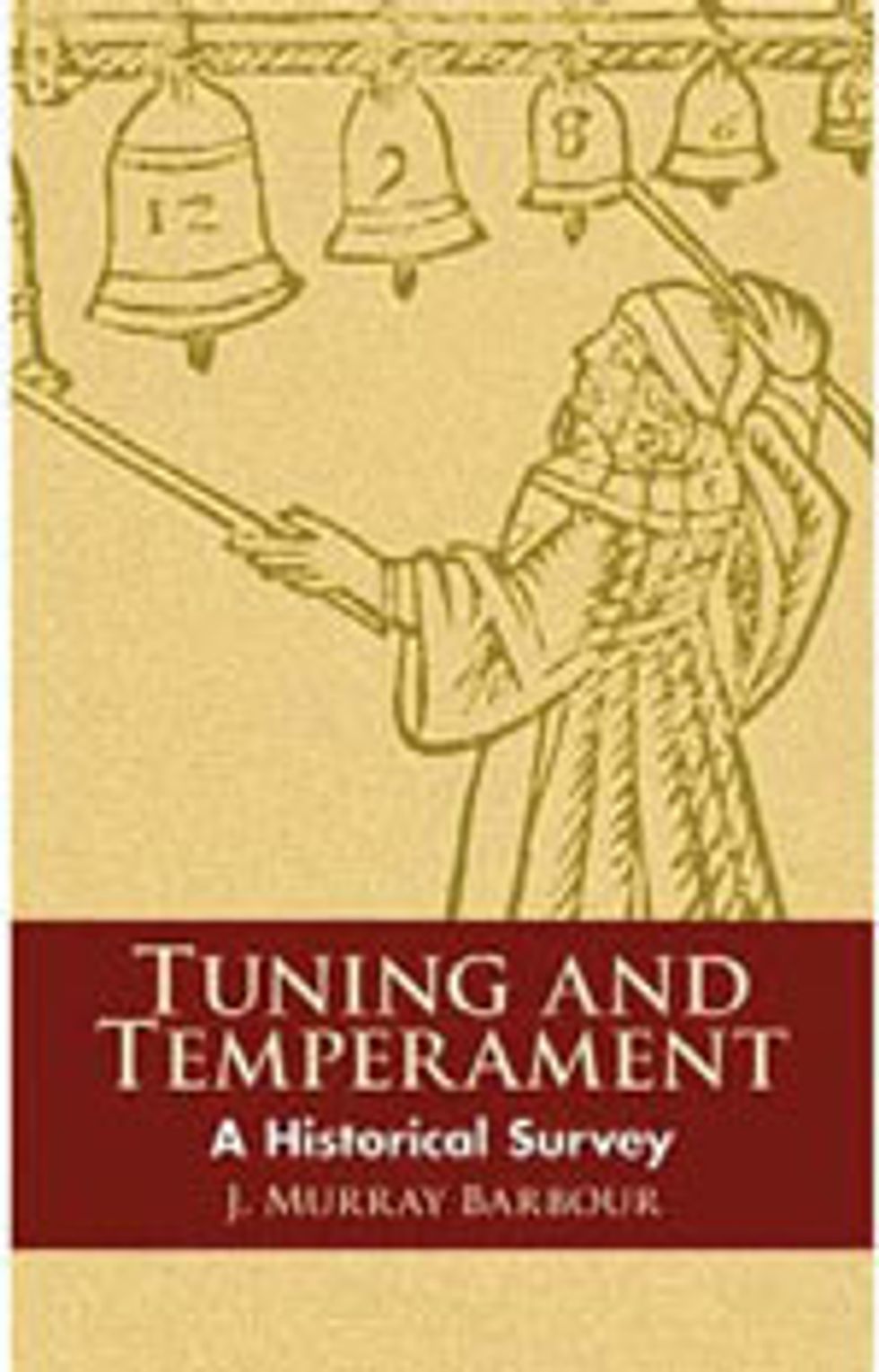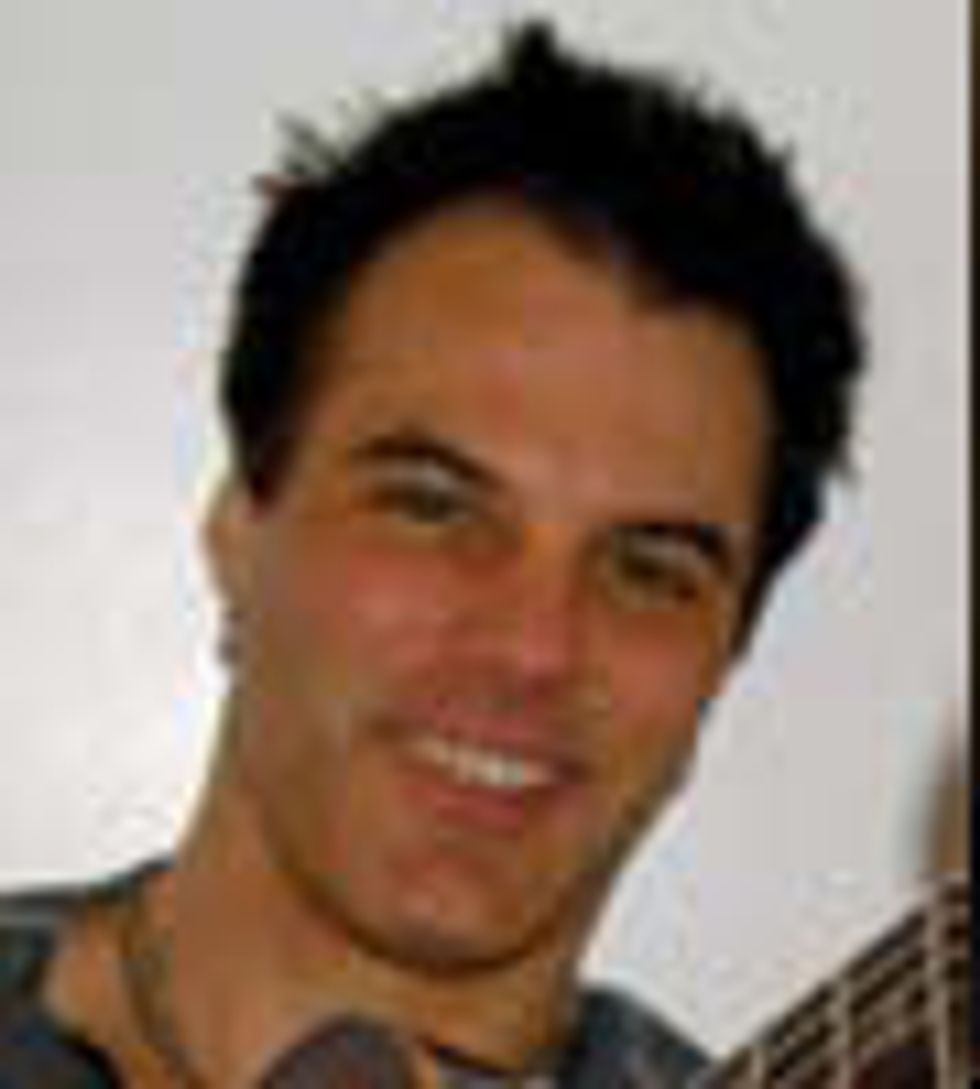 Interested in exploring the history of scales and temperaments? J. Murray Barbour's classic Tuning and Temperament: A Historical Survey examines the various systems that have been used across the centuries. |
Do you remember the first
time you felt intonation?
I was in junior high, taking my
second guitar lesson. My teacher,
Mike Hoover, hit a 5th-fret
E harmonic on the 6th string
and then struck the 7th-fret E
harmonic on the A string. As he
slowly turned a tuner, I felt the
fast pulse of the discord begin
to slow down and eventually
stop as the two notes became
one. I could almost see the sine
waves line up. Like so many
guitarists, that was the moment
I began a quest to achieve perfect
intonation. Regrettably, this
isn't as simple as that early harmonic
lesson led me to believe.
Duke Ellington said he only
really understood music when he
grasped the difference between
G# and Ab. The Duke never did
explain his cryptic quote, but he
was probably talking about tonal
context and enharmonics. G#
and Ab are “enharmonic," which
means they are tones that have
the same pitch, but different
letter names. (Which name you
use depends on the scale association.)
Though they're literally
the same note on the piano and
guitar, if you mathematically
work out the frequencies, there
actually is a difference: G# is 41
cents lower.
Quibbling purists talk this
way to make dumb guitar
schmoes like me feel inferior.
However, there is scientific
truth to this sharp and flat
distinction, and whether you
know it or not, you've probably
been unconsciously adjusting
for it. According to the laws of
physics, intervals change with
keys. But the modern, equal-temperament
tuning system we
use in Western music makes a
few fudgy concessions to deal
with the limitations of set-tuned
instruments like guitar.
The math behind tuning
looks like the calculus-class
chalkboard in the movie A
Beautiful Mind, but in a nutshell,
it works like this: With
equal temperament, the octave
is divided into 12 half-steps,
and each adjacent interval has
an identical frequency ratio.
But—here's the rub—except
for octaves, no intervals have
exact ratios.
Harmony is order in chaos.
Pythagorean tuning found harmony
in fifths, but perfect fifths
produce out-of-tune octaves and
thirds. A slew of mathematicians
have suggested meantone
temperament could remedy the
Pythagorean shortcomings by
narrowing all fifths, except for
one. The problem? Meantone
tuning produces more than 12
notes in an octave. Renaissance
instrument builders produced
keyboards with split accidental
keys—D# and Eb, G# and Ab,
and others.
J.S. Bach popularized wohl
temperiert tuning, a scheme
that grew into the system used
on modern keyboards. This
employs built-in dissonance that
sounds right(ish) in context. Hit
a middle C on a piano, then
the highest and lowest C notes.
You'll hear imperfect intervals,
but it's close enough for rock
and roll ... or Bach.
Because masterful a cappella
groups and string ensembles
aren't bound by frets, their
members can individually
adjust their intonation in real
time. This allows them to produce
incredibly sweet harmony.
About 15 years ago, the Beach
Boys did an album in Nashville
with country artists. I was lucky
enough to play in the house
band for one of their Nashville
shows. We did our soundcheck,
then Brian Wilson, Mike Love,
Al Jardine, Bruce Johnson,
and Carl Wilson sang a cappella
to ring in their monitors.
Though I'd never been a Beach
Boys fan before, I can honestly
say I'd never heard anything
so extraordinary. Without our
instruments cluttering up the
sonic landscape with questionable
tuning, those voices produced
pure harmony.
Though our static fretboard
rules out such pitch flexibility,
there are ways we can improve
our intonation. Most good
players do this, though often
unconsciously. Ever notice how
when you play songs, you avoid
certain strings or chord voicings
because they just don't sound
right? That's you adjusting for a
glitch in the system.
Another example is our
beloved big, dumb power
chords. They always sound great
because removing that pesky
third gives you closer intonation
and a fun ambiguity. (Is it
major? Is it minor?) Add a little
distortion, and tuning becomes
even less of an issue. Ever notice
how gently manipulating a
whammy bar or adding a bit of
chorus or Leslie simulation can
make a guitar sit well in a mix?
As sound swirls around, intonation
becomes less pronounced.
The fine art of vibrato and
bending probably originated in
an attempt to adjust intonation.
The intonation quest can
become an unhealthy obsession,
but a heightened awareness
will improve your playing.
How far you take it depends
on whether you are a “God is
in the details" or a “don't sweat
the small stuff " player. I'm a
bit of both. If I'm tracking a
song in the key of G, I start
by tuning flat to the tuner, but
then retune by ear with my
fingers hitting a G on both E
strings. I let my ear and gear
guide me and just try to feel
something. I've found that
sometimes the heavy overtones
humbuckers generate seem
to jack with intonation when
I'm utilizing all six strings in
a chord. But other times, for
big dumb rock or dark jazzy
stuff, those delicious humbuckers
fatten up the closer triads,
power chords, or single lines
that would sound anemic in
single-coil land.
If you ever find yourself
preoccupied with tuning and
worrying about how you can
sound right with an instrument
that will not physically
play in tune, listen to brother
Duane Allman's slide on the
end of “Layla," or Jimmy Page
in “Heartbreaker," or Keith
Richards in “Sympathy for the
Devil." They may be out of
tune with the Western scale,
but they are all perfectly in tune
with the song's emotion. The
ambiguity of intonation is part
of the beauty, sadness, and tension
in music. Hearing that, I
see the hand of the divine and
sense the mystery of it all.
John Bohlinger is a Nashville multi-instrumentalist best know for his work in television, having lead the band for all six season of NBC's hit program Nashville Star, the 2011, 2010 and 2009 CMT Music Awards, as well as many specials for GAC, PBS, CMT, USA and HDTV.
John's music compositions and playing can be heard in several major label albums, motion pictures, over one hundred television spots and Muzak... (yes, Muzak does play some cool stuff.) Visit him at youtube.com/user/johnbohlinger
or facebook.com/johnbohlinger and check out his new band, The Tennessee Hot Damns.


















